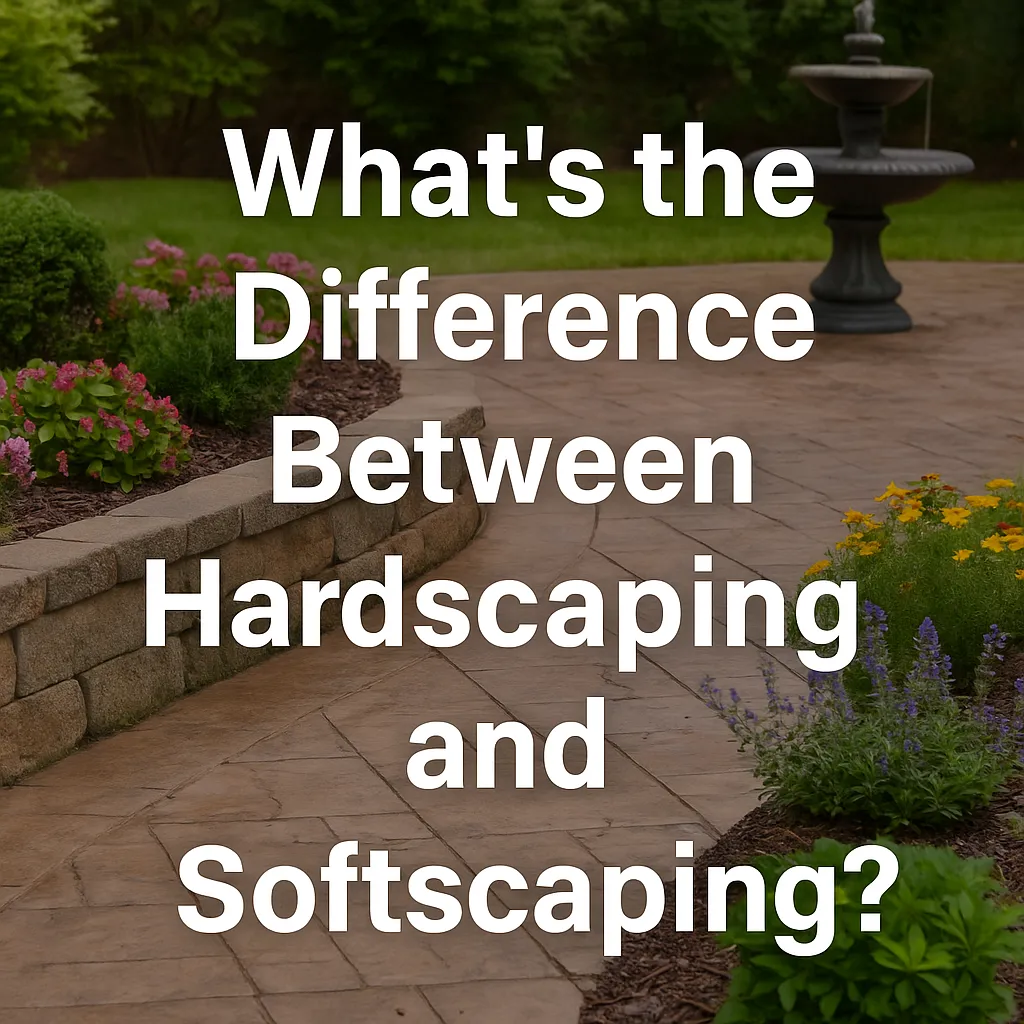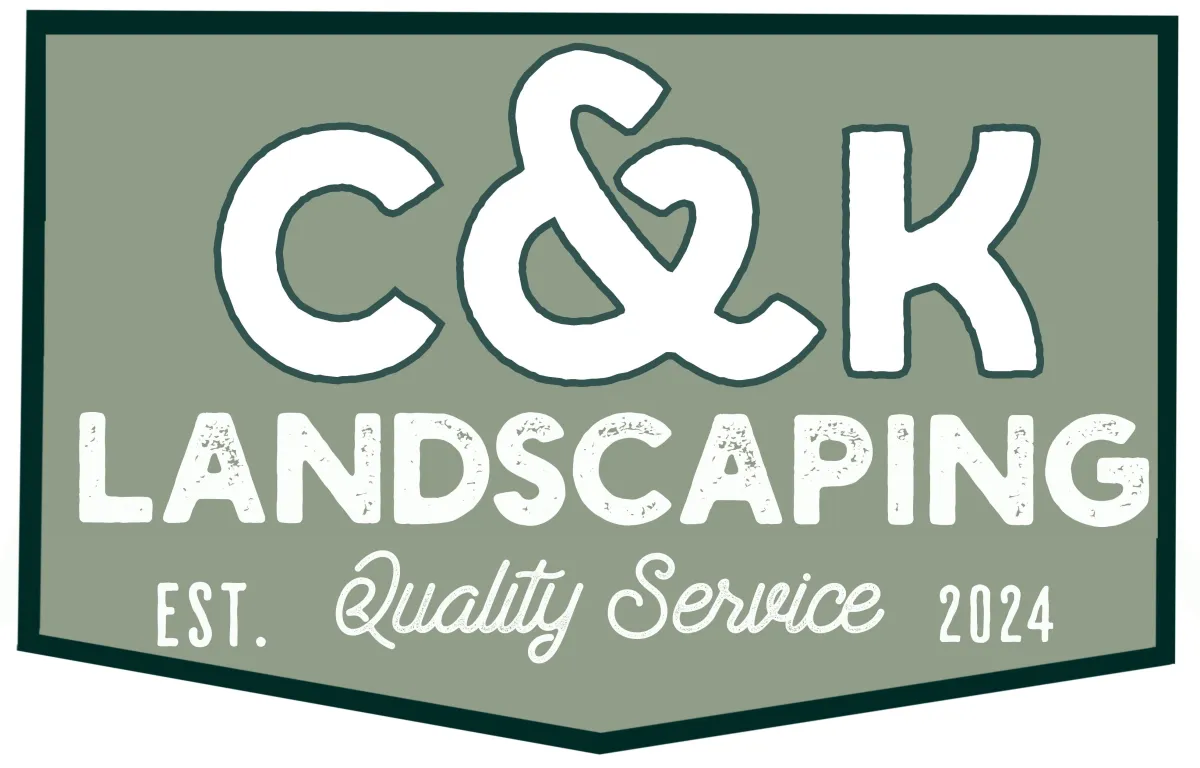Groundwork with C&K
Laying the foundation for better landscapes—expert advice, local insights, and outdoor inspiration.
Expert Tips for Thriving Utah Landscapes
Welcome to Groundwork with C&K, your go-to resource for expert landscaping insights, sustainable design ideas, and smart outdoor solutions tailored for Utah living. Whether you're dreaming of a drought-tolerant garden, planning a full-yard transformation, or just want to make your landscape easier to maintain, we’re here to help you lay the foundation for a yard that’s as functional as it is beautiful.

What’s the Difference Between Hardscaping and Softscaping?
When planning a beautiful and functional outdoor space, you’ll likely hear the terms hardscaping and softscaping. While both are essential components of landscape design, they serve very different purposes. Understanding the difference between the two can help you make informed decisions as you bring your landscaping vision to life.
What Is Hardscaping?
Hardscaping refers to the non-living, structural elements of your landscape. These features are often made of stone, concrete, metal, or wood and form the “bones” or foundation of your outdoor space. Hardscaping defines areas, creates function, and adds permanence to a yard.
Common Hardscape Features:
Patios and decks
Walkways and stepping stones
Retaining walls
Fences and gates
Driveways
Pergolas, arbors, and gazebos
Outdoor kitchens and fire pits
Hardscaping is essential for usability and curb appeal. It provides structure, directs foot traffic, controls erosion, and sets the stage for your planting beds and lawn.

Example: A stamped concrete patio bordered by a stone retaining wall is a prime example of hardscaping that enhances both beauty and functionality.
What Is Softscaping?
Softscaping includes all the living, horticultural elements in your yard—the parts that grow, change, and evolve with the seasons. Softscape features bring color, movement, and life to the otherwise rigid elements of hardscape.
Common Softscape Elements:
Lawn (grass or turf)
Shrubs and trees
Flowers and perennials
Garden beds
Groundcovers and mulch
Vines and hedges
Softscaping is what makes a yard feel lush, vibrant, and alive. These elements can be customized to reflect personal style, regional climate, and maintenance preferences.

Example: A soft border of flowering perennials around a stone pathway enhances its visual appeal and brings in pollinators.
Hardscape vs. Softscape: Why Both Matter
The key to a successful landscape design is balance. Too much hardscape can make your yard feel sterile or harsh, while too much softscape can lead to maintenance headaches or a lack of definition.
Feature Hardscaping Softscaping Composition Non-living materials Living plants and organic matter Purpose Structure and usability Beauty and seasonal interest Lifespan Long-term and permanent Needs care and changes over time Examples Patios, walls, paths Grass, flowers, shrubs
A thoughtfully designed yard uses hardscaping for structure and support, while softscaping brings color, texture, and ecological value.
Designing Your Landscape: Tips for Success
Whether you're hiring a professional or going DIY, consider these key tips:
1. Start with Hardscape First
Install permanent features like patios, walkways, or irrigation before you begin planting. It prevents root damage and messy redo’s later on.
2. Match Your Maintenance Style
Don’t love yard work? Choose low-maintenance softscape elements like drought-tolerant plants, mulch beds, and native shrubs.
3. Think in Layers
A beautiful yard uses vertical space—trees for height, shrubs for mid-level interest, and groundcovers to fill in below.
4. Use Hardscaping to Frame Your Softscape
Retaining walls, edging, and raised beds help organize plantings, improve drainage, and add contrast.
5. Plan for the Seasons
Use a mix of evergreen and deciduous plants, plus some that bloom at different times, to keep your landscape appealing year-round.
Real-Life Applications of Hardscape and Softscape
Still wondering how these concepts come to life? Here are a few examples from successful landscaping projects:
Backyard Retreat: A client in Salina wanted a relaxing backyard with minimal upkeep. We designed a paver patio with built-in bench seating and paired it with a softscape of low-maintenance ornamental grasses and river rock beds. The result was a cozy space perfect for family barbecues and evening relaxation.
Curb Appeal Overhaul: A Richfield homeowner needed an update that wouldn’t break the bank. We removed overgrown shrubs and added a retaining wall with tiered garden beds filled with hardy perennials. It drastically boosted curb appeal and resale value.
Xeriscape Upgrade: For a drought-conscious property in Manti, we used decorative rock, native wildflowers, and steel-edged pathways to create a stunning xeriscaped yard with almost zero lawn maintenance.
Each of these projects showcases how balancing hardscape and softscape brings beauty, value, and functionality to any outdoor space.
Should I Hire a Professional?

Absolutely! While you can tackle small projects on your own, combining hardscape and softscape elements into a unified design often requires a trained eye.
At C&K Landscaping, we specialize in creating outdoor spaces that are not only stunning but built to last. From paver walkways and retaining walls to water-wise plant selections and lush lawn installations, we do it all—so you can enjoy your yard without the stress.
📍 Serving Central Utah, including Richfield, Manti, Salina, and Gunnison, our team is local, experienced, and passionate about great landscaping.
Ready to Build Your Dream Landscape?
Let’s talk! Whether you're dreaming of a flagstone path through native flowers or a custom fire pit for entertaining, we’re here to help from design through installation.
👉 Contact Us Today for a free consultation and turn your vision into reality.
